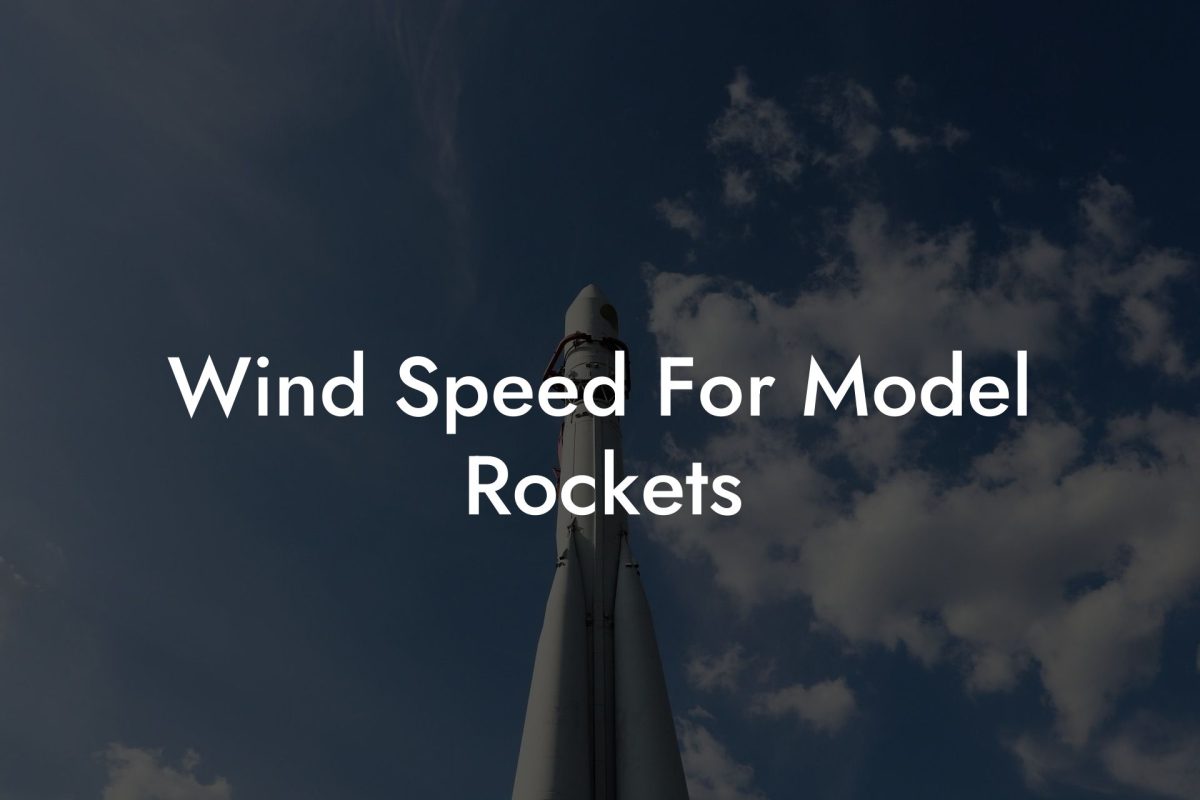If you've ever launched a model rocket, you've probably witnessed the exciting phenomenon of fin flutter: a rapid back-and-forth motion of the fins as the rocket speeds through the air. But what causes this vibration, and how can it affect your rocket's performance and stability? In this comprehensive article, we will explore the fascinating world of fin flutter, its impacts on model rocketry, and how you can analyze and minimize this effect to achieve a smoother, safer flight.
Analyzing Fin Flutter For Model Rockets Free Table of Contents
Understanding Fin Flutter
Fin flutter occurs when a model rocket's fins experience aerodynamic forces that cause them to vibrate at high frequencies. This can be triggered by a combination of factors, including speed, fin size and shape, and material stiffness. Moreover, the rocket's acceleration and angle of attack can also play a role in exacerbating or mitigating fin flutter.
Causes of Fin Flutter
- Speed: As the rocket's speed increases, so do the aerodynamic forces acting on the fins. This can result in amplified and sustained vibrations, potentially leading to structural damage.
- Fin Design: The size, shape, and thickness of the fins will significantly influence how they respond to aerodynamic forces. Larger, thinner, or more flexible fins are generally more susceptible to flutter.
- Material Stiffness: The rigidity of the fin material can help dampen vibrations and prevent excessive fin flutter. However, stiffer materials may be more prone to breakage or damage if subjected to high loads.
Consequences of Fin Flutter
Fin flutter can have several negative consequences for your model rocket, including:
- Reduced Stability: Excessive fin flutter makes it more challenging for the rocket to maintain a stable and straight flight path, potentially leading to off-course deviations or even catastrophic failures.
- Structural Damage: Prolonged or extreme fin flutter can cause fins to crack, break, or separate from the rocket body, severely compromising its structural integrity and flight performance.
- Performance Loss: The vibrations caused by fin flutter can sap energy from the rocket, reducing its overall efficiency and maximum altitude capabilities.
Analyzing Fin Flutter
To assess and mitigate fin flutter, you can leverage the following tools and techniques:
Software Simulation
Model rocketry enthusiasts can now benefit from advanced software applications, like RockSim or OpenRocket, that simulate rocket flights and estimate the risk of fin flutter. By modeling your specific rocket design and flight conditions, you can more accurately assess the level of fin flutter you're likely to encounter and make adjustments accordingly.
High-Speed Video Analysis
High-speed video footage of test flights can reveal valuable insights into fin flutter behavior, allowing you to compare different fin designs and materials to identify the most stable and efficient configurations for your rocket.
Wind Tunnel Testing
For serious rocketeers, wind tunnel tests can provide the ultimate level of detail and accuracy in analyzing fin flutter. By applying various airspeeds and observing fin motion firsthand, you can precisely fine-tune your fin design to minimize flutter without sacrificing structural integrity or aerodynamic performance.
Analyzing Fin Flutter For Model Rockets Free Example:
Let's say you've built a model rocket with large, thin balsa wood fins. After some test launches, you notice excessive fin flutter at high speeds and suspect this may be compromising the rocket's stability and performance. To address this issue, you can:
1. Perform a software simulation using RockSim or OpenRocket account for variables such as rocket mass, center of gravity, and aerodynamic properties to estimate the likelihood and severity of fin flutter.
2. Record high-speed video footage of your rocket in flight to visually confirm the fin flutter and gain insights into its behavior.
3. Test different fin materials, such as thicker balsa wood or even fiberglass, to determine the most suitable combination that reduces fin flutter while maintaining appropriate flight performance.
4. Optionally, conduct wind tunnel testing to further validate and optimize your fin design.
Fin flutter can be an intimidating challenge for any model rocket enthusiast, but through a combination of software simulation, high-speed video analysis, and even wind tunnel testing, you can gain valuable insights and effectively address this phenomenon. By understanding the underlying causes, impacts, and strategies for managing fin flutter, you'll be one step closer to achieving the perfect rocket launch and the admiration of your fellow rocketeers. So why not share this article with your friends and family and explore more fantastic guides on Austin Rockets to enhance your model rocketry knowledge and skills?













